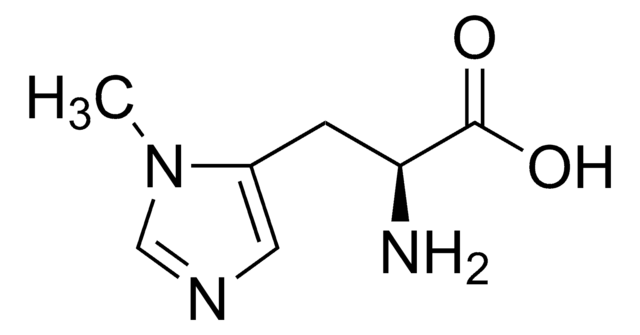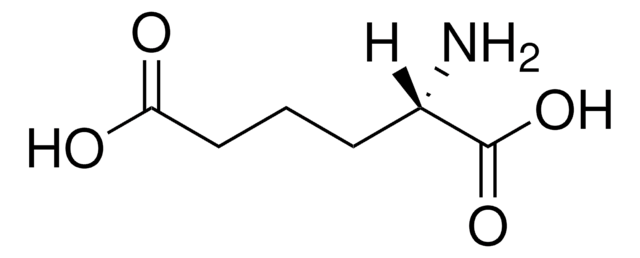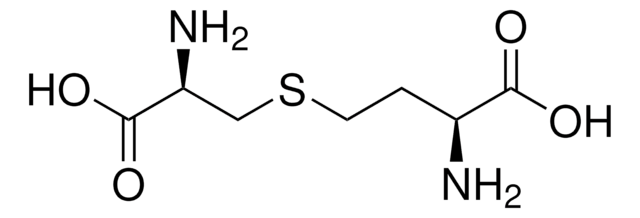H0377
DL-5-Hydroxylysine hydrochloride
≥98% (TLC)
Synonym(s):
2,6-Diamino-5-hydroxycaproic acid hydrochloride, 2,6-Diamino-5-hydroxyhexanoic acid hydrochloride
About This Item
Recommended Products
product name
DL-5-Hydroxylysine hydrochloride,
Assay
≥98% (TLC)
Quality Level
form
powder
color
white
mp
225 °C (dec.) (lit.)
application(s)
detection
peptide synthesis
SMILES string
Cl.NCC(O)CCC(N)C(O)=O
InChI
1S/C6H14N2O3.ClH/c7-3-4(9)1-2-5(8)6(10)11;/h4-5,9H,1-3,7-8H2,(H,10,11);1H
InChI key
MJXVOTKVFFAZQJ-UHFFFAOYSA-N
Looking for similar products? Visit Product Comparison Guide
Application
- Characterization of acetyl-CoA: L-lysine N6-acetyltransferase, which catalyses the first step of carbon catabolism from lysine in Saccharomyces cerevisiae.: This research investigates the enzyme acetyl-CoA: L-lysine N6-acetyltransferase, which initiates the catabolism of lysine in Saccharomyces cerevisiae. Utilizing DL-5-Hydroxylysine hydrochloride, the study provides insights into the metabolic pathways and regulatory mechanisms of lysine degradation, contributing to the broader understanding of amino acid metabolism in yeast (Bode et al., 1993).
Biochem/physiol Actions
Other Notes
Storage Class Code
11 - Combustible Solids
WGK
WGK 3
Flash Point(F)
Not applicable
Flash Point(C)
Not applicable
Personal Protective Equipment
Certificates of Analysis (COA)
Search for Certificates of Analysis (COA) by entering the products Lot/Batch Number. Lot and Batch Numbers can be found on a product’s label following the words ‘Lot’ or ‘Batch’.
Already Own This Product?
Find documentation for the products that you have recently purchased in the Document Library.
Customers Also Viewed
Our team of scientists has experience in all areas of research including Life Science, Material Science, Chemical Synthesis, Chromatography, Analytical and many others.
Contact Technical Service








